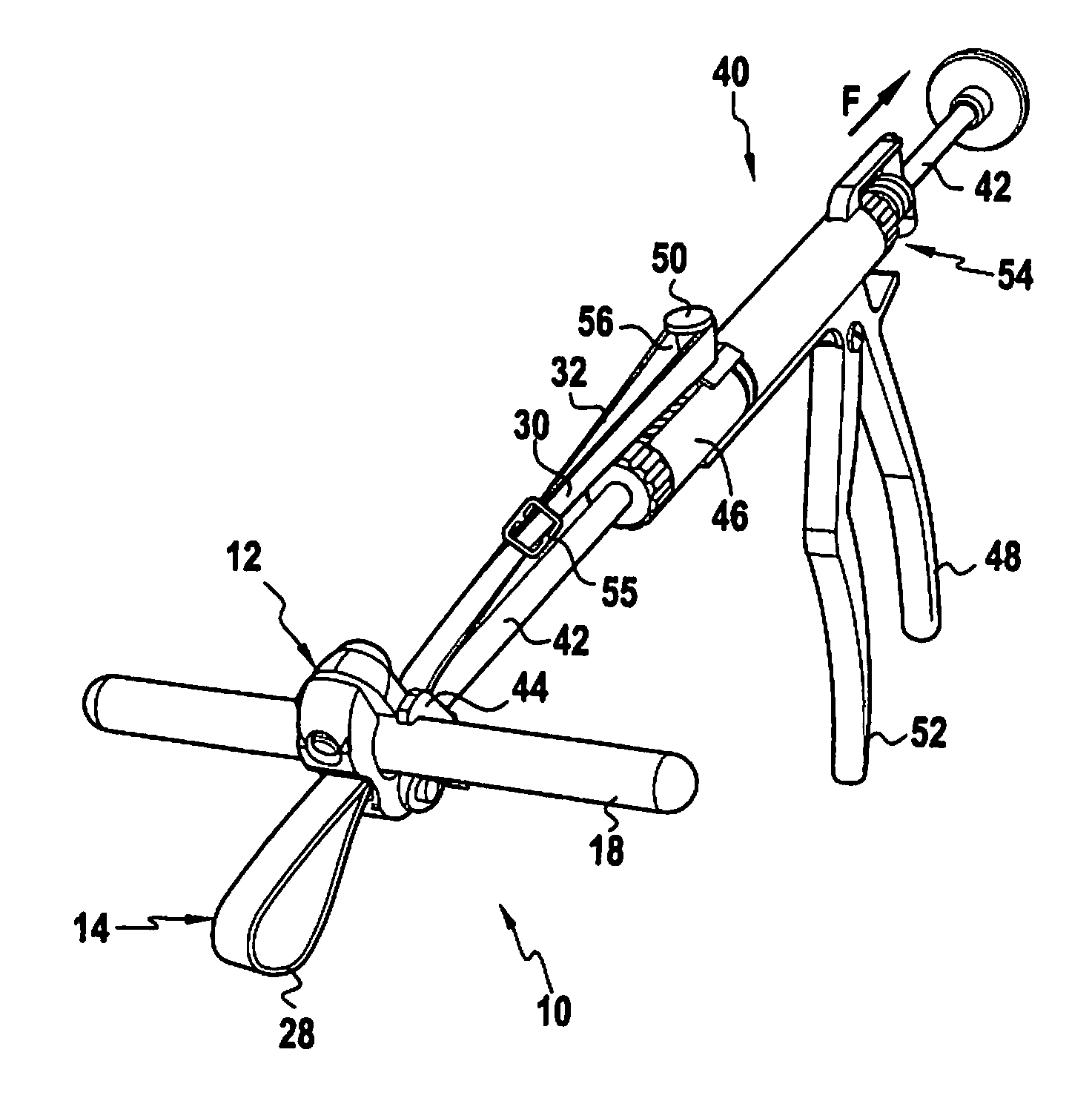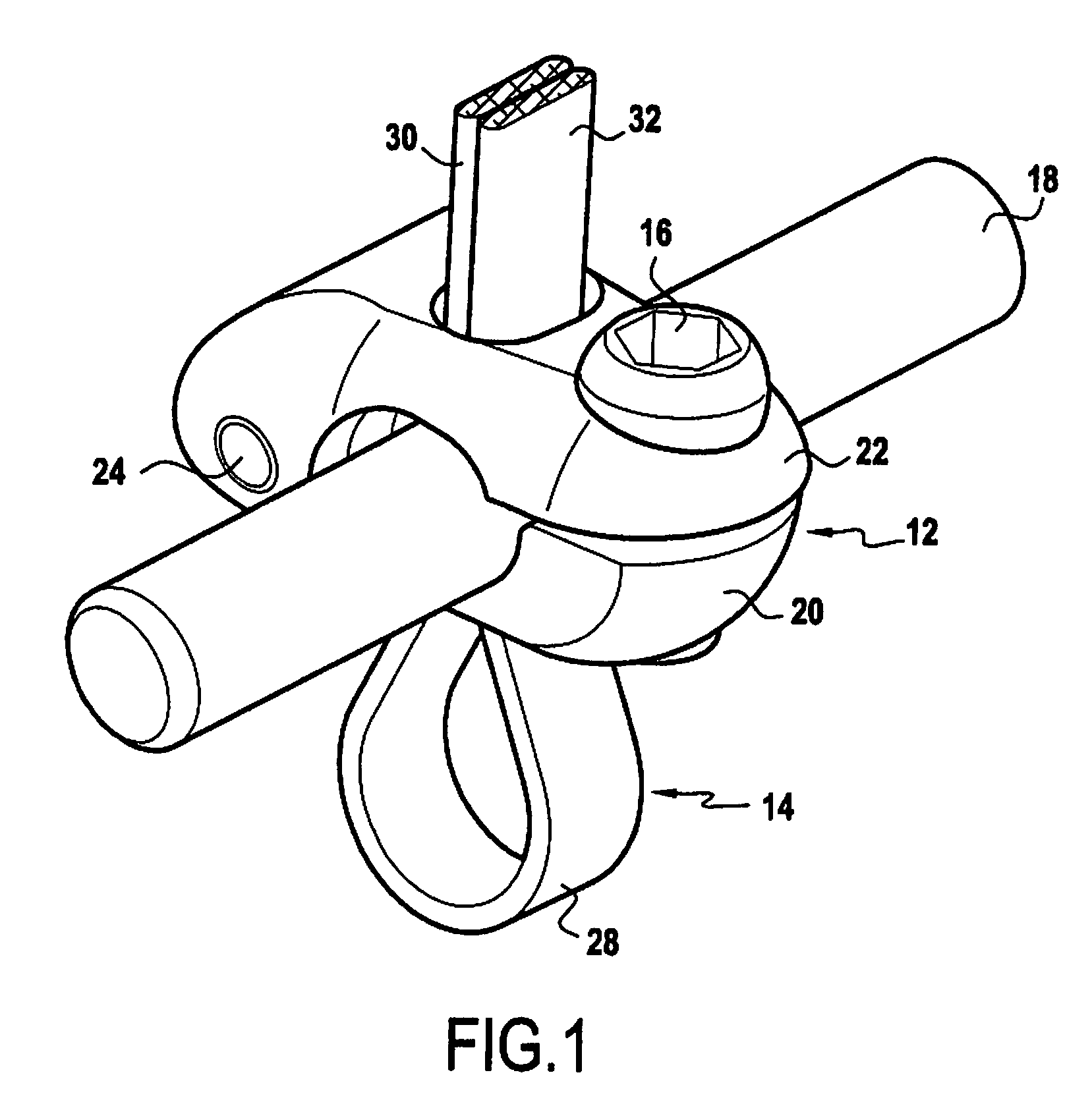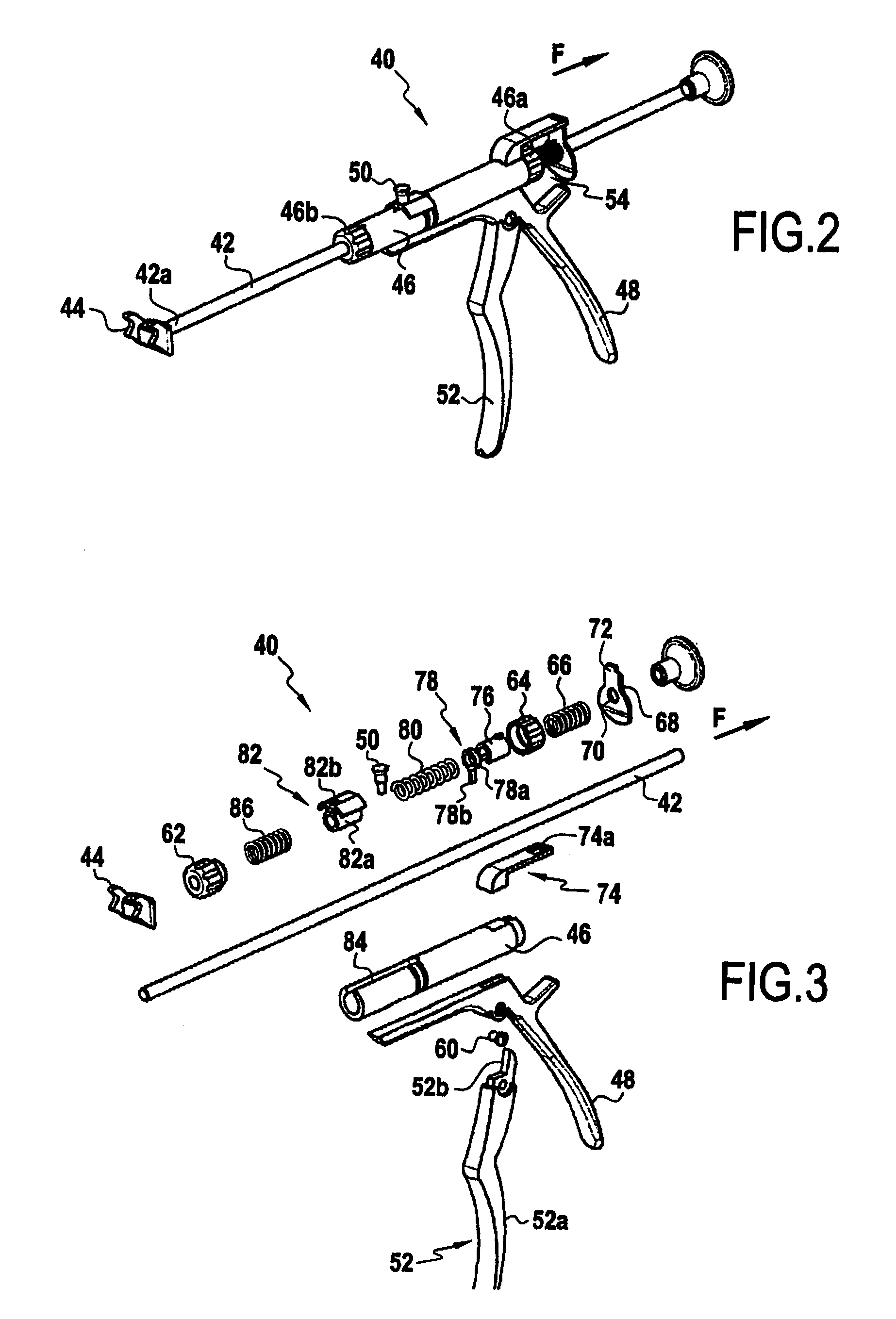Instrument for tensioning a flexible tie
a flexible tie and instrument technology, applied in the field of flexible tie tensioning instruments, can solve the problems of difficulty in using such hooks, small pedicles, damage, etc., and achieve the effect of avoiding untimely breakage of the tie or damage to the bony elemen
- Summary
- Abstract
- Description
- Claims
- Application Information
AI Technical Summary
Benefits of technology
Problems solved by technology
Method used
Image
Examples
Embodiment Construction
[0036]With reference initially to FIG. 2, there follows a description of the instrument assembly 40. It is essentially constituted by a rod 42 having a first end 42a fitted with bearing means 44 for bearing against the implant on which the tie is to be tensioned. The instrument 40 also has a moving part 46 that is movable in translation relative to the rod 42. The moving part 46 is generally cylindrical in shape and is provided with a handle 48. The moving part 46 also has a stud 50 on its portion remote from the handle 48. As explained below, the stud 50 serves to hold the tie on which tension is to be applied. The instrument 40 also comprises a control member constituted by a trigger 52. As explained below, actuating the trigger 52 serves to cause the moving part 46 to move rearwards relative to the rod 42 in the direction of arrow F. In addition, at its end 46a opposite from its end 46b closest to the bearing element 44, the moving part 46 is fitted with an anti-return system act...
PUM
 Login to View More
Login to View More Abstract
Description
Claims
Application Information
 Login to View More
Login to View More - R&D
- Intellectual Property
- Life Sciences
- Materials
- Tech Scout
- Unparalleled Data Quality
- Higher Quality Content
- 60% Fewer Hallucinations
Browse by: Latest US Patents, China's latest patents, Technical Efficacy Thesaurus, Application Domain, Technology Topic, Popular Technical Reports.
© 2025 PatSnap. All rights reserved.Legal|Privacy policy|Modern Slavery Act Transparency Statement|Sitemap|About US| Contact US: help@patsnap.com



